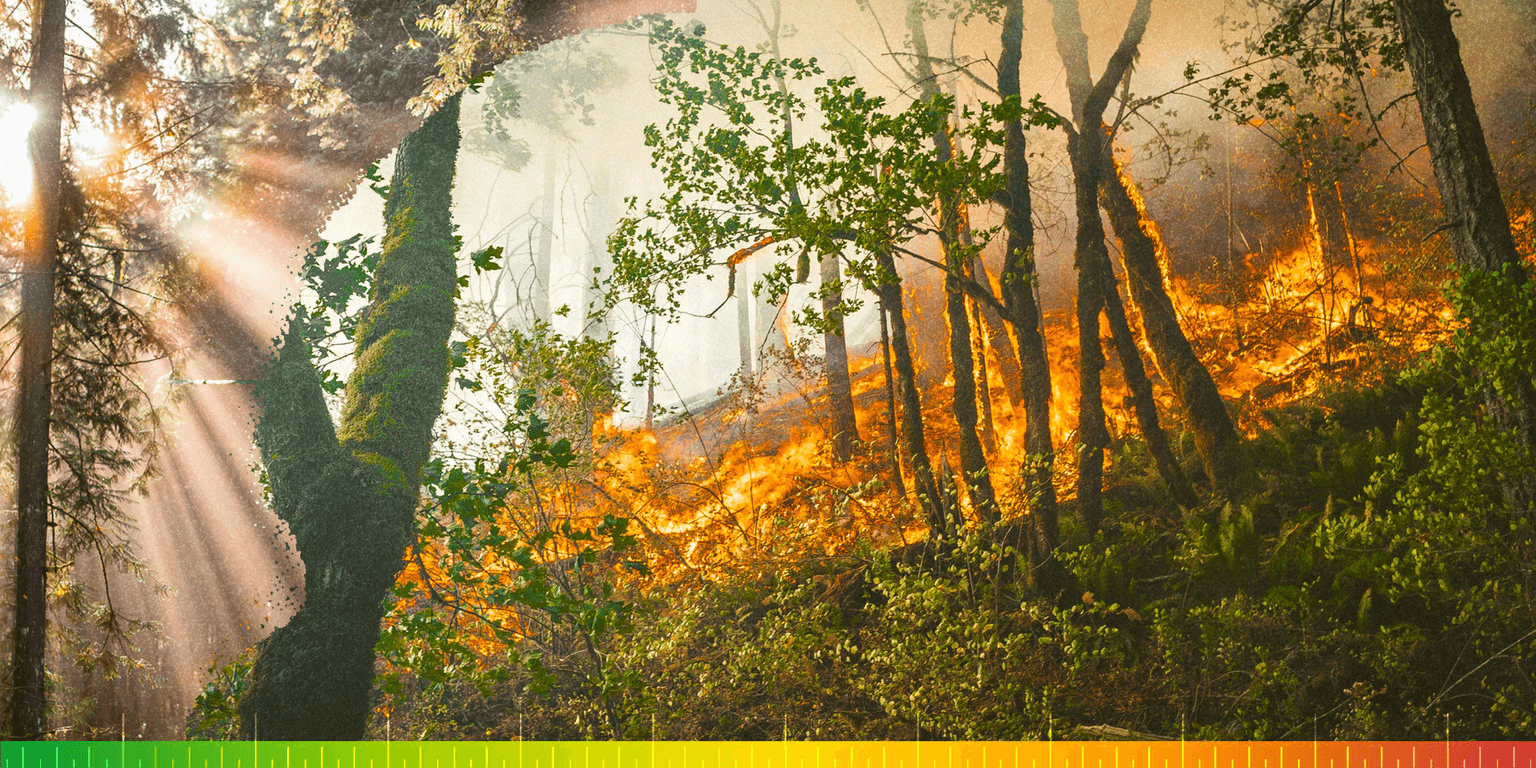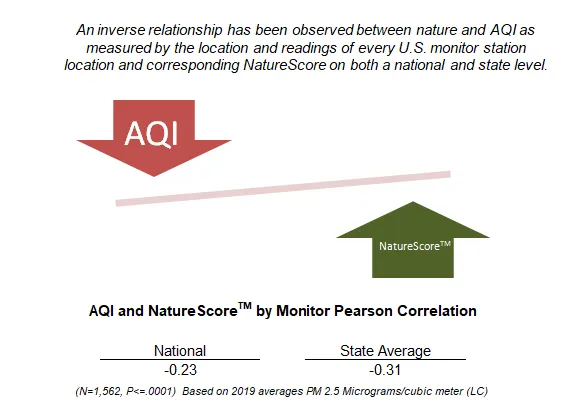Combating Air Pollution with Nature
Many trees are burning throughout the West. Can nature help combat the resulting air pollution?

Key Points
- Trees can act as both the “lungs” of a city (by providing oxygen) and the “liver” (by filtering particulate matter, sulfur dioxide, and nitrogen dioxide).
- Ironically, as major fires rage throughout the forests of the Western United States, one important part of the air quality improvement toolset is incorporating nature.
- For both a city-wide approach and an individual planning perspective, new tools can help analyze the amount and benefit of nearby nature.
Combating Air Pollution with Nature
As larger and more frequent wildfires plague the Western U.S., creating peak hazardous air conditions for millions, more and more people are becoming concerned about the relationship between air quality and health. Over the fifty years since the passage of the Clean Air Act of 1970, air quality across the U.S. has improved dramatically. However, according to the American Lung Association, four in ten people in the U.S. still live in areas with poor air quality; which can result in serious health problems, such as asthma, lung cancer, and cardiovascular disease. Technology to control and remove pollutants can be costly, and it often requires a great deal of energy. One strategy gaining increased scrutiny is the use of natural elements to reduce air pollution. Individuals can also use “nearby” nature, from neighborhood trees to house plants, to access better air quality.
Every year, the percentage of people living in cities rises; at present, over 80% of people in the U.S. live in urban areas. Given their concentrated populations, cities usually are short on green space. However, greenery has been working its way back into urban landscapes, and for many good reasons. In addition to offering aesthetic benefits and increasing property values, trees help make city air safer. Numerous studies have found that, in many cases, nature-based solutions to air pollution might be better and cheaper than technology at combating air pollution. Adding plants and trees to the landscapes near factories and other pollution sources could reduce air pollution by an average of over 25%. Proximity to nature also increases longevity; recent studies have concluded that a decrease in air pollution might be one mechanism by which greenness can protect health.
Trees have a remarkable range of traits that can help reduce urban air pollution, and cities around the world are looking to harness them. In January 2019, the mayor of London announced that 7,000 trees would be planted before the end of the following year. Meanwhile, China’s Hebei Province, home to Beijing, has been working on a ring of plants that could help reduce pollution from factories that surround the capital. Paris is planning an urban forest that will encompass its most iconic landmarks in an effort to adapt to climate change and improve the city’s air quality.
Trees can improve air quality not only directly but also indirectly. Specifically, they can help by shading surfaces and reducing temperatures. When buildings are shaded by trees, the buildings need less conventional air conditioning; that, in turn, decreases the emissions of greenhouse gases. Plus, lower temperatures decrease the risk of harmful pollutants, like ground-level ozone, that commonly spike on hot days in urban areas.
Trees are also effective at filtering atmospheric pollutants, like sulfur dioxide and nitrogen dioxide, through their leaves. Further, trees remove particulate matter (PM) in the form of tiny particles of organic chemicals, acids, metals, and dust, emitted from fossil-fuel-burning vehicles and factories, construction sites, and, yes, forest fires. Fine PM can easily penetrate into the human respiratory system, causing lung and cardiovascular diseases or exacerbating respiratory illnesses. High particulate matter counts have also been linked to inflammation and heart disease. By one estimate, 8.9 million deaths per year globally could be attributable to exposure to outdoor fine particulate matter.
Recent research suggests that tiny hairs on plant leaves in particular may play a significant role in trapping the solid and liquid particles that makeup PM. At the same time, planting conifers, evergreens that can work year-round, may be most beneficial in reducing PM2.5s in polluted cities like Beijing. The Chinese capital routinely reports PM levels above 125 micrograms per cubic meter, which is more than 10 times greater than the World Health Organization recommended threshold of 10 micrograms per cubic meter
Tools are now available to help urban designers identify the species best suited to a particular location. For example, free software provided by the US Forest Service, iTree species, ranks species based on a set of variables including air-pollution removal abilities, carbon storage, and VOC emissions.
That kind of advice is not just for urban planners. Much of the promising research on greenness and health is based on a 500-meter radius from the participant’s residence. Citizens can now count on an expanding range of toolkits to help them choose what to plant or where to live. One example, NatureQuant, allows a user to call up a “NatureScore®,” which reflects the relative amount of nature near her home, and the associated, predicted health outcomes. Likewise, Jennifer Gabrys, a sociologist at the University of Cambridge, developed a digital tool that lets anyone play a role in reducing air pollution. Called Phyto-sensor, and developed while Gabrys was at Goldsmiths University, the tool lists plants that have been proven to reduce PM, like wallflowers and ivy, and suggests planting locations. While “hyper-local” air quality measurements are not readily available, proximity to nature is clearly important.
A significant correlation between NatureScore® and the Air Quality Index by monitor location has also been observed. Specifically, a higher NatureScore® predicts a lower AQI, meaning cleaner air.

Of course, live vegetation is only one way to filter pollution. And reducing emissions of pollutants is an even better strategy for efficiently improving air quality. Still, in major industrial areas, in dense urban landscapes, or in the era of widespread, catastrophic wildfires, the power of nature can be a great help.